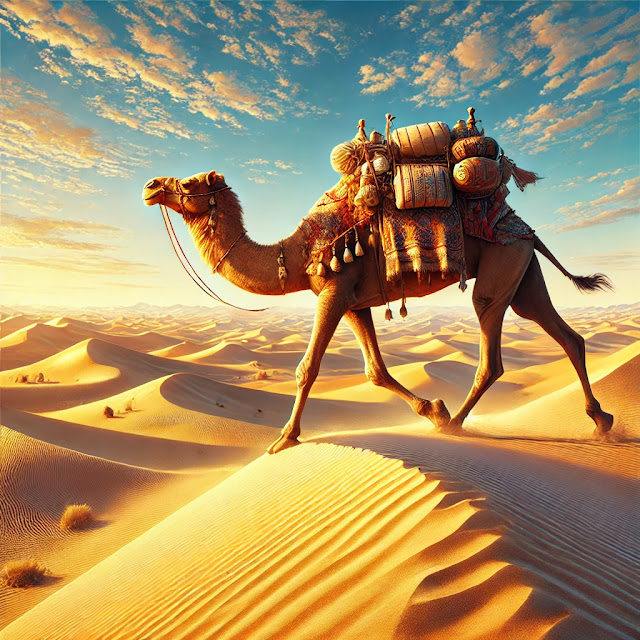 |
| Why we called camel as ship of desert ? |
Camels are often referred to as the "ship of the desert" due to their unique adaptations and ability to thrive in harsh desert environments. Here are the main reasons:
1. Adaptation to Desert Conditions
-
Ability to Travel Long Distances:
- Camels can travel up to 40-50 kilometers per day in the desert without tiring.
- This is comparable to how ships traverse long distances across the ocean.
-
Water Storage:
- Camels can survive without water for several days (up to 7-10 days) by efficiently storing water in their bodies.
- Their ability to drink up to 40 gallons (150 liters) of water in one go supports long journeys.
2. Carrying Heavy Loads
- Camels are used to transport goods, people, and supplies across deserts, just as ships carry cargo across seas.
- They can carry 200-300 kilograms of weight, making them essential for trade and travel in desert regions.
3. Navigation through the Desert
- Camels are well-suited to navigate the challenging desert terrain, much like ships navigate the vast and featureless ocean.
- Their wide, padded feet prevent them from sinking into the sand, enabling smooth travel.
4. Resistance to Harsh Conditions
- Extreme Temperatures:
- Camels can endure temperatures ranging from -29°C to 49°C.
- Sandstorms:
- Their long eyelashes, closable nostrils, and thick eyebrows protect them from blowing sand, much like a ship withstands strong winds and waves.
5. Lifeline for Desert Communities
- Camels provide essential resources like milk, meat, and wool for people living in deserts.
- Their ability to sustain communities mirrors the role of ships in supporting life and commerce across oceans.
In summary, camels are called the "ship of the desert" because they facilitate travel and trade, sustain life in harsh environments, and navigate vast, arid landscapes, just as ships do on water.

.jpg)



















Follow Us